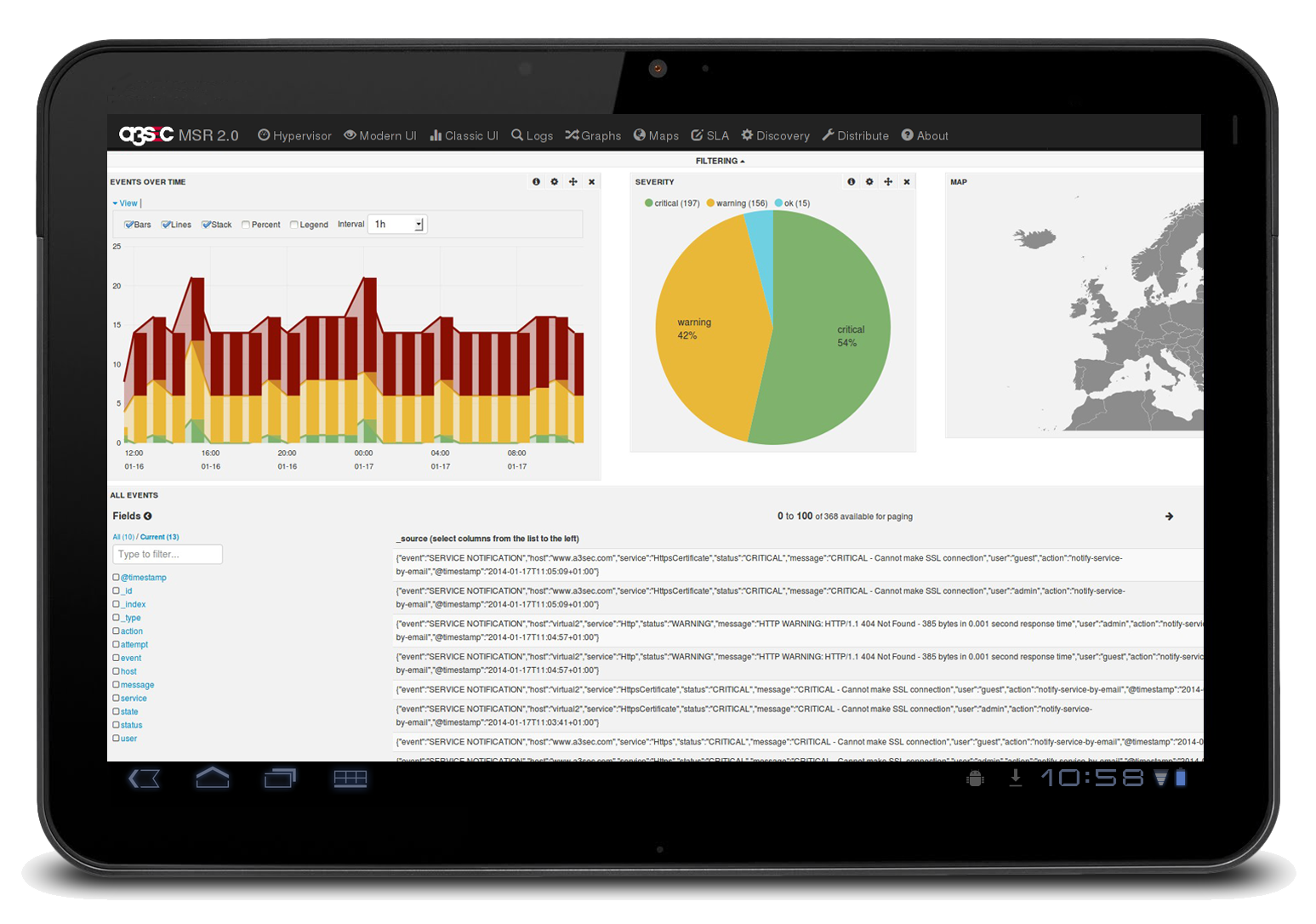Toda empresa, ya sea pequeña - con unos cuantos servidores o dispositivos de red - hasta una multinacional - con varios datacenters - sabe que necesita una herramienta de monitorización fiable, para estar segura de que todo funciona como debería, porque se juegan mucho.
 Every company, whether small - with a few servers or network devices - to a multinational - with several datacenters - knows that they need a reliable monitoring tool, to be sure that everything is working as it should, because they have a lot at stake.
Every company, whether small - with a few servers or network devices - to a multinational - with several datacenters - knows that they need a reliable monitoring tool, to be sure that everything is working as it should, because they have a lot at stake.
Perhaps the people most interested in having this type of solution are the technicians in charge of that infrastructure.
They need to be able to work on their daily tasks without the need to be constantly checking to make sure that a disk has not filled up or that a business-critical database has crashed.
We do not need to go far back in time to find computer failures that affected us massively.
A few months ago, at the beginning of June, 18 hospitals in the Community of Madrid were unable to manage medical appointments and patient records for 3 hours.
The queues were monumental and the inconvenience caused... you can imagine!
In mid-May last year, British Airways caused three days of air chaos at Heathrow and Gatwick airports as a result of a power cut. At least that is the official version, although the bad tongues speak of a cyber-attack ...
In any case ....
What happened, were they not monitoring their infrastructure?
Surely they were.
So how come nobody was alerted of what was going to happen?
Monitoring solutions have been around for years, some are very network specific, others are database oriented, others only talk to devices from this or that manufacturer/architecture. And so many companies find themselves today, maintaining various monitoring solutions for their IT equipment pool.
Maybe the hospital appointment system alert went out on the X monitoring system, but part of what they had to do to resolve the problem included talking to the technicians in area A and the escalation was done by the E team, without being able to give the technicians in area A the full information of what was seen on the X monitoring console.
If all the teams working to keep IT infrastructures up and running are seeing the same information about their systems, won't they be quicker to act on an incident?
In general, we see the advantages of unifying departments and work teams: optimization of resources, faster responses to problems, lower maintenance costs... and at this point almost everyone has reached the same conclusion: they need to have a single monitoring solution.
Each department puts its conditions on the table:
- "It has to support SNMP" - says the network people.
- "I need to audit the Oracle logs" - say the dba's
- "I don't want to get calls from users saying that their internet is down and be the last to know!" - says the production people
When you finish writing the list of requirements for this "tool that monitors everything" is endless!
And it seems that a solution to the problem will never be found.
Now, what if I tell you that we have heard this story so many times before and in the end...we have found the SOLUTION!
If you have taken a look at WOCU Monitoring you will have already seen what it can do. We started a few years ago listening to needs, implementing them, listening again, expanding, improving, listening again, until it has become our "modus operandi".
WOCU is what you see today, but we don't stop there, every day we walk a few steps.
Don't delay in coming back to visit us because maybe that day is coming where today was not.
Do you have problems with monitoring?
Do you want to use a single IP Infrastructure Monitoring tool, with WOCU you will be able to service hundreds of clients and monitor thousands of devices in a centralized way.









